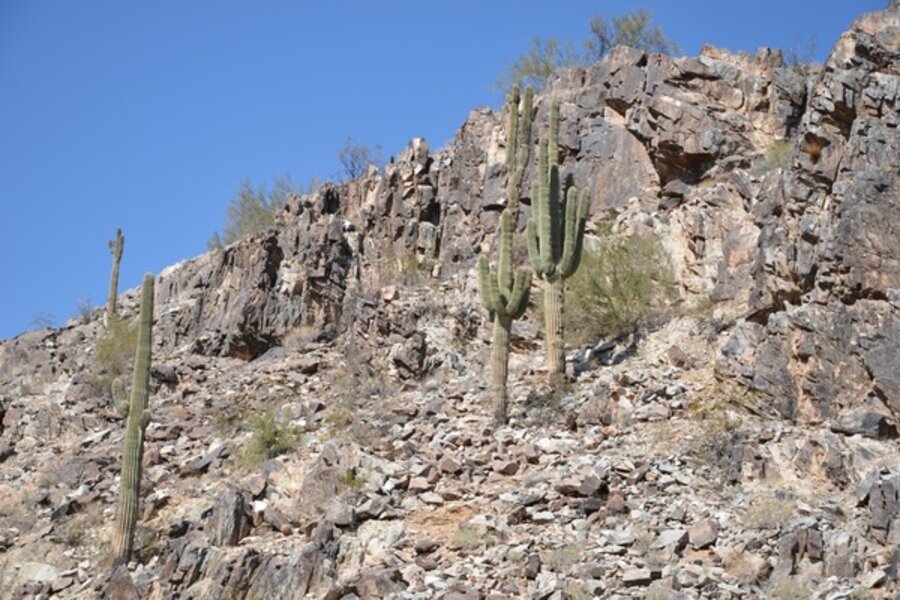A garden writer heads to Phoenix, where they really turn up the heat
Loading...
Last winter, Zone 5 Iowa, where I live, became Zone 7 Iowa. Which is to say, for the first time in history the temperature did not go below zero. Kinda nice. Almost toasty.
Then we had a prolonged heat wave this summer. Not so nice. Drought.
But despite the fact that US weather researchers say that our temps in the past year were the highest since record-keeping began in 1895, the need still exists here to escape the cold. (OK, so I’m a weather wimp.) And one of the few direct flights from this little burg goes to Phoenix
So inside of three hours or so I was relaxing by the pool at the Arizona Biltmore, an ersatz Frank Lloyd Wright project designed to look midway between a Mayan temple and a mausoleum. At long last, I am warm again.
Phoenix Mountains
There's another bonus of staying at this architectural icon: quick access to the Phoenix Mountains desert preserve. Only 20 minutes from the pool.
OK, so I wanted to get warm, but this rocky incline was hot. Most sensible hikers were carrying water, but I figured I’d only get sweatier lugging the stuff up the mountainside. Six of one …
Saguaro cactus
Now this place isn’t exactly gardenesque, but it is dang impressive. I don’t know how even cactus grows here. But all around were those wondrous saguaros, all looking as though they were being held up.
Did you know it takes about 75 years for that cactus to grow its first arm? This is another reason national parks in the West have trouble with a different kind of rustler – cactus rustlers. Seems some McMansion owners don’t have the patience to wait for their own cacti to reach for the sky.
An hour of stumbling over mountain rubble in the baking sun, and I’d enjoyed about as much as I could stand. So I went back to the pool. Funny. I went to the pool the first day to get warm. But now I’m going there to cool off.
What else I’m into this week: Growing a goatee to keep my moustache warm. It’s Mowvember.
-----
Craig Summers Black,The Transplanted Gardener, is an award-winning garden writer and photographer who is among more than a dozen expert gardeners who blog regularly here at Diggin' it. You can read more of what he's written at Diggin' It by clicking here. You may also follow Craig’s further adventures in gardening, music, and rural life on Twitter.







